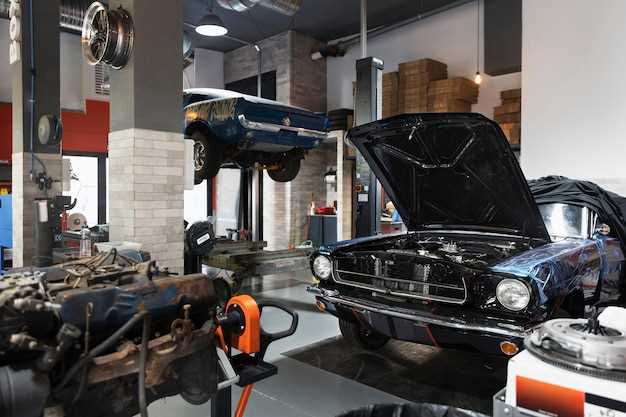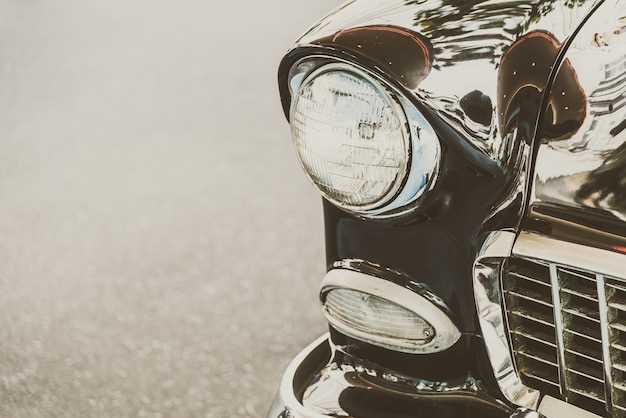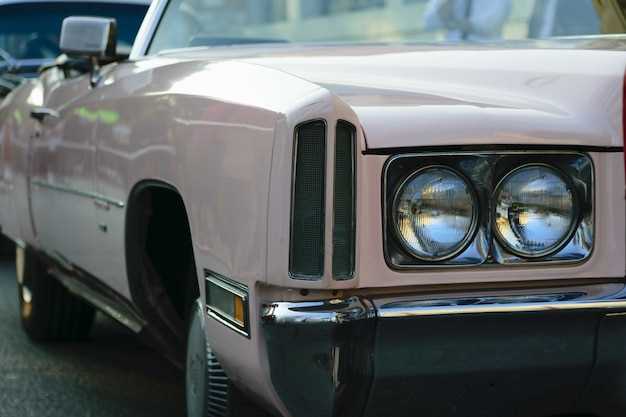What to Know About Classic Car Auctions

Classic car auctions are thrilling events where automotive history meets investment potential. For enthusiasts and collectors, these auctions offer a chance to acquire rare vehicles that not only represent timeless craftsmanship but also hold the promise of appreciating value. However, navigating the auction landscape requires knowledge and strategy. In this article, we will provide essential tips that can empower you to make informed decisions when bidding on classic cars.
Understanding the intricacies of the auction process is crucial for anyone looking to participate. From comprehending auction catalogs to knowing how to evaluate a vehicle’s condition, being well-prepared can significantly enhance your experience. Whether you’re a seasoned collector or a newcomer to the world of classic cars, familiarizing yourself with these key insights will help you savor the exhilaration of the auction while optimizing your chances of securing the classic vehicle of your dreams.
In the following sections, we will delve into practical strategies and insider advice that will elevate your auction game. From setting a budget and researching market trends to understanding the importance of provenance, these insights aim to equip you with the confidence needed to navigate the exhilarating yet unpredictable realm of classic car auctions.
Understanding Auction Terms and Bidding Strategies

When entering the world of classic car auctions, it is essential to familiarize yourself with key auction terms and effective bidding strategies. This knowledge can significantly enhance your experience and improve your chances of buying your dream vehicle.
Auction Terms: Understanding common terms used in auctions is the first step for any bidder. Here are some important phrases:
- Reserve Price: This is the minimum price that a seller is willing to accept for their classic car. If bidding does not reach this amount, the car will not be sold.
- Bid Increment: This refers to the minimum amount by which a bid must be raised during the auction. Knowing this can help you plan your bidding strategy effectively.
- Buyer’s Premium: This is an additional fee charged by the auction house, typically a percentage of the final bid price. It’s important to factor this into your overall budget when considering a purchase.
- No Reserve Auction: In a no reserve auction, the vehicle will be sold to the highest bidder regardless of the final price, which can sometimes lead to unexpected bargains.
Bidding Strategies: Developing a robust bidding strategy is crucial to successful buying at classic car auctions.
- Set a Budget: Before the auction, determine your maximum price, including the buyer’s premium. This prevents impulsive bids that can lead to overspending.
- Do Your Research: Investigate the classic car market and specific models you are interested in. Understanding the value and demand can inform your bidding decisions.
- Start Low: Consider placing an early bid at a lower price to gauge interest without revealing your maximum willingness to pay.
- Observe Other Bidders: Pay attention to the bidding behavior of others. This can provide insights into the competition and help you adjust your strategy as needed.
- Be Prepared to Walk Away: If the bidding exceeds your budget or has adjusted out of range, be willing to walk away. Many classic cars will appear at future auctions.
By mastering auction terms and honing effective bidding strategies, classic car enthusiasts can navigate the auction landscape with confidence and increase their chances of securing coveted vehicles at favorable prices.
Evaluating Vehicle Condition and Authenticity Before Purchase
When considering buying a classic car, understanding its condition and authenticity is vital to ensure a worthy investment. Start by conducting a thorough visual inspection. Look for signs of rust, repainting, or bodywork that may indicate previous accidents. Pay close attention to the undercarriage, as it can reveal hidden issues that are not easily visible from the outside.
Next, assess the vehicle’s mechanical components. Test the engine, transmission, brakes, and suspension to ensure they operate smoothly. A well-maintained classic will often have service records available, so request documentation that outlines the car’s maintenance history. This can provide valuable insights into how well the vehicle has been cared for over the years.
Authenticity is another crucial factor in your evaluation. Research the specific model and its features to confirm that the vehicle retains original parts and specifications. Check the Vehicle Identification Number (VIN) against manufacturer records, and consider obtaining an expert opinion or professional appraisal if you have doubts about the car’s originality.
Lastly, consider the classic car’s provenance. Previous ownership history, including participation in vintage car shows or events, can enhance its value. A classic car with a well-documented background is often more desirable among collectors and enthusiasts. Use these tips to ensure that your purchasing decision is informed, leading to a satisfying ownership experience.
Budgeting for Post-Purchase Restoration and Maintenance

Buying a classic car is an exciting venture, but it often comes with significant costs beyond the purchase price. Proper budgeting for restoration and maintenance is essential to avoid unexpected financial burdens down the line. Here are some tips to help you allocate resources effectively.
First, assess the condition of the vehicle before purchasing. A thorough inspection can reveal areas that will require significant investment. Consider creating a checklist of potential repairs, including bodywork, engine restoration, and interior refurbishing. This initial assessment will help you estimate costs more accurately.
Second, establish an emergency fund specifically for unforeseen repairs. Classic cars often have components that can fail unexpectedly due to age. Setting aside a dedicated budget can provide peace of mind and prevent financial strain when issues arise.
Third, research the typical costs of parts and labor for the specific make and model you intend to purchase. Some classic cars have readily available replacement parts, while others may require sourcing difficult-to-find components. Understanding these factors will allow you to create a realistic budget for future repairs and maintenance.
Additionally, consider the potential for DIY restoration. Depending on your skillset, tackling certain projects on your own can save money. Allocate funds for tools and resources if you choose this route, and remember to factor in the time commitment associated with DIY efforts.
Finally, don’t overlook routine maintenance costs, such as oil changes, tire replacements, and brake service. Even if a classic car looks great, regular upkeep is crucial to preserve its value and performance. Integrate these costs into your overall budget to ensure that you aren’t caught off guard by routine expenses.



